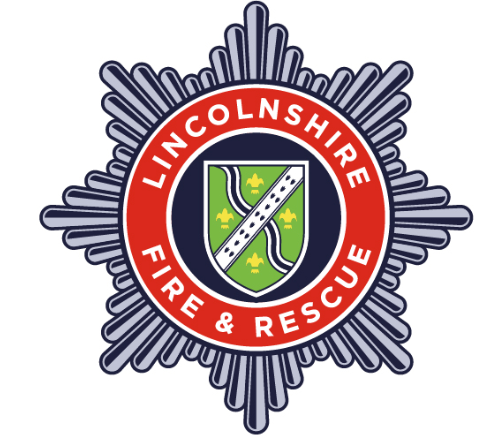Coastal Flooding
What is the risk of coastal flooding to Lincolnshire?
Coastal flooding is caused by high tides, low pressure weather systems, and surge conditions caused by strong winds blowing large waves towards the shore.
Low atmospheric pressure allows the sea’s surface to bulge upwards in what is called a ‘storm surge’. If strong persistent onshore winds occur, these increase the height of the surge and generate waves that can damage the coastline.
Surges can occur at any point on the tidal cycle; at low tide they rarely cause flooding but at high tide the resulting flooding can be significant.
If there is a very large sea surge in the North Sea, with tides, gale force winds and potentially heavy rainfall, many coastal regions and tidal reaches of rivers could be affected, from South Yorkshire down the coast as far as Kent. Many coastal and estuary defences would be overtopped or breached, and drains would back up. Inundation from these breaches would be rapid and dynamic, with minimal warning and for some people, no time to evacuate.
You can download the information used on this page via a bite-size risk information document.
How could flooding
affect you and your property?
- Risk to life
- Disruption to utilities (electricity and water supply)
- Damage to property, businesses and agricultural land
- Widespread structural damage
- Risk to life of livestock
- Flooding of properties for up to 14 days
- Pollution and contamination of local environments
- Evacuation of residents
- Long term damage to tourism
- Short, medium and long term businesses and agriculture
- Loss of accommodation for those whose homes or businesses are flooded
- Damage to national critical infrastructure (North Sea oil and gas installations)
- Unrecoverable damage to businesses
We can all be better prepared to
respond and recover from flooding
Follow these practical steps so you and your family can be better prepared for flooding.
Check if your property is at risk
Find out if your property is within a flood risk area.
Sign up for flood warnings by phone, text or email
Write a personal flood plan
Find guidance and checklists to help you prepare for flooding.
Check on your neighbours
Identify neighbours who may need assistance or who may be able to provide assistance to you, in case of evacuation.
Create an emergency contact list
In an emergency, even a person with the best of memories may not remember critical phone numbers.
Make sure you have house insurance and check it covers flooding
Fit appropriate flood protection devices to your property
For further information please visit GOV.UK
How to prepare
your business
How to prepare
your community
Evacuating
during a flood
- If you are advised to evacuate due to a risk of coastal flooding, please do so. Staying behind will put both yourselves and emergency responders in danger
- If you are advised to leave the area for your safety decide where you will go and how you will get there
- Ensure you have enough fuel in your vehicle for your journey
- Know how to safely turn off your electricity, water and gas supplies (if you’re unsure, ask your gas and electricity company)
- Remember to take your medication with you
- Where possible take your pets with you
- Let your neighbour know what you are doing where are you staying/going
- For the most up to date information visit Lincolnshire LRF on Twitter X and Facebook
- Listen to BBC Radio Lincolnshire
Staying put
during a flood
- If you do choose to stay put, be aware you may have days without power or water or mobile phone communication if you are flooded. You are putting responders at risk if you subsequently need rescuing
- Have supplies in your home that will enable you to cope for up to three days if you are unable to evacuate
- Take your valuable items upstairs, if possible, or place them up high in cupboards/shelves.
- Do not walk through flood water – there can be hidden dangers such as debris or sharp objects
Report a flood
- Telephone the Environment Agency’s Floodline number (0345 988 1188) if you are experiencing flooding.
Medical advice
- If you need medical help and you are evacuated from your home visit NHS 111 online or call 111
- If you are away from home, you can call your registered GP Practice for a telephone or video appointment
- If you are able, please let your GP Practice know you have been evacuated if you have any appointments
- If your practice needs to cancel your appointment you do not need to do anything they will contact you to rearrange the appointment
- If you need any medicines during the evacuation and you forget them you can contact your GP Practice or NHS 111
Find your emergency contacts for coastal flooding
After a flood
- Continue to monitor the LRF website/ social media channels for guidance and advice.
- Listen to BBC Radio Lincolnshire for the most up to date information
If you were flooded
- Take photographs of any damage if it is safe to do so- to provide to your insurance company
- Get your electric meter checked by the electricity transmission company before you attempt to switch anything back on again.
- Get your fuse box and electrical sockets checked by an electrician
- Check that the water in your taps is now safe to drink before you drink it
- Get a Gas Safe Engineer to check your gas appliances before use to ensure they are safe
- Be aware of the health effects caused by a flood. When cleaning up wear appropriate clothing and protection as flood water can be contaminated with harmful bacteria.
- Be mindful of how the stress and traumatic feelings of personal loss can have an impact on your own and the mental wellbeing of others. What to do after a flood - GOV.UK (www.gov.uk)
- Safely clean up your home - Floods: cleaning your home safely - GOV.UK
What can you do to support your community?
- Identify neighbours who may need assistance or who may be able to provide assistance to you
- Find out how to prepare for an emergency and download a flood plan here: Get Involved – Lincolnshire Resilience Forum
- Join or start an Emergency Community Group – Get Involved – Lincolnshire Resilience Forum
- Make sure that any vulnerable neighbours or relatives are safe and help them make arrangements if they require assistance
For help with flood related insurance visit Find an insurer - Flood Re
How prepared is your business?
- Would your business stay afloat? This is a simple guide to some of the easy actions that you can take to make sure that your business is as well prepared as possible for flooding.
- It tells you how to find out if your business is at risk, information about the Environment Agency’s flood warning service and it also has a simple template to use to design a flood plan for your business.
- Complete the Business Resilience Health Check
- Make sure you have suitable business insurance, the Association of British Insurers provides useful advice and information.
What is being done to become
better prepared?
We work together to:
- Prioritise support to vulnerable residents in the highest risk areas.
- Assist people to evacuate an area if they require it.
- Provide a helpline so people can request support.
- Produce multi-agency plans so that every responding organisation knows what they can do, at the right time, to support people who may be affected by flooding.
- Test the multi-agency plans through a variety of exercises.
- Keep the public informed of the changing situation via local media stations, social media and the LRF website.
- Maintain two-way communication with central government to ensure that any additional national resources can be provided to support the local response.
We can request military support when it is appropriate to assist with the response and rescue phase.
Who is responsible for managing
flooding in the county?
Lincolnshire County Council is our Lead Local Flood Authority and is responsible for pluvial flooding from overwhelmed drains.
The Environment Agency is responsible for fluvial flooding where waterways overflow their banks into surrounding areas.
Further flooding resources
Are you signed up to receive flood warnings? If not call the Environment Agency Floodline on 0345 988 1188 to see if your area receives free flood warnings.
Discover how you can be better prepared to deal with flooding, with suggested protection methods from the Lincolnshire Resilience Forum.
Storymaps
Storymaps are a visually interactive way for you to find out more information about some of the top risks to Lincolnshire and what you can do in the event of one of these risks. The information is reader-friendly and interactive making it easy to navigate
Some of our partners

















